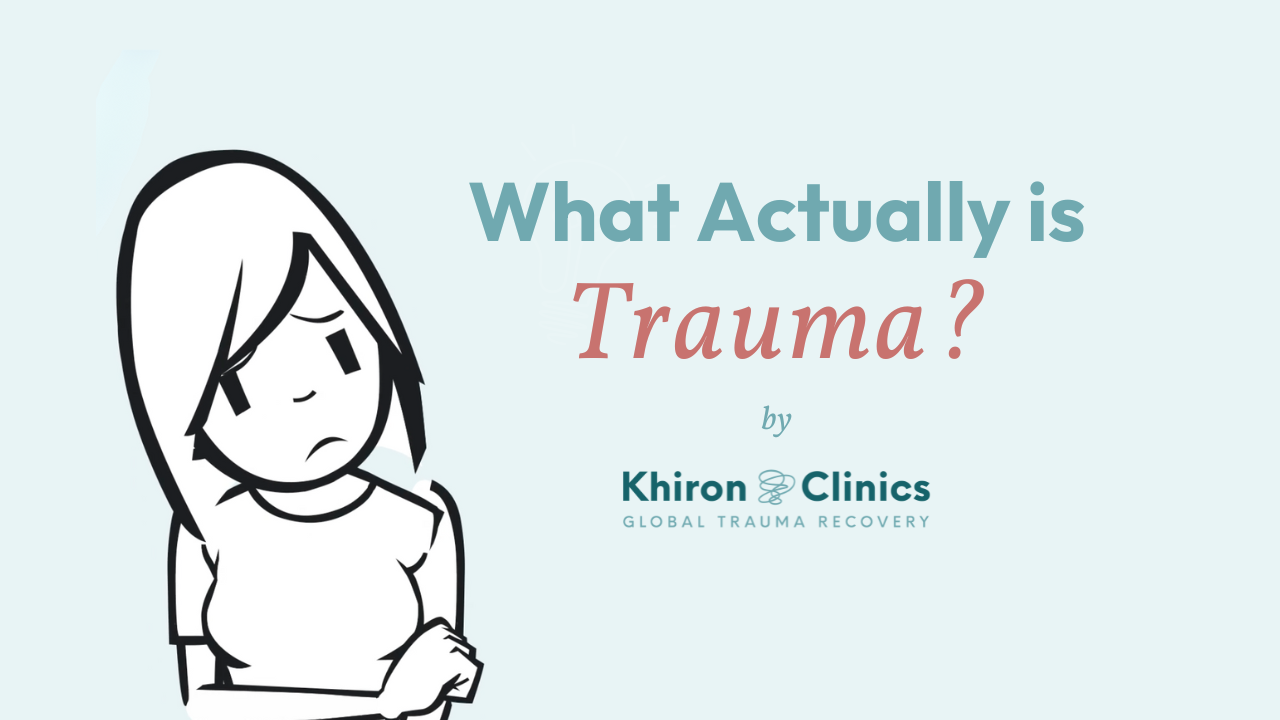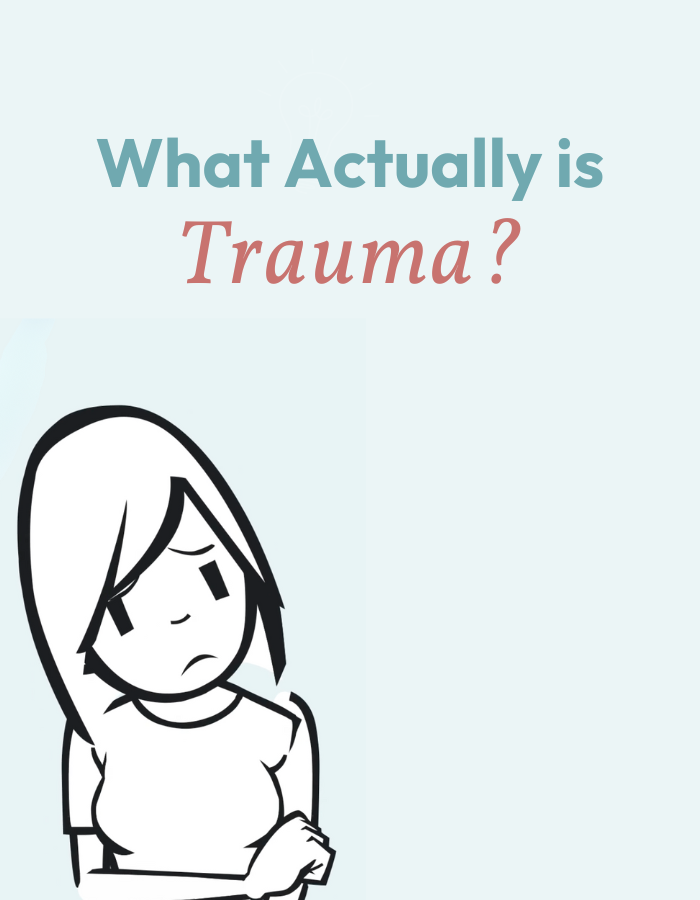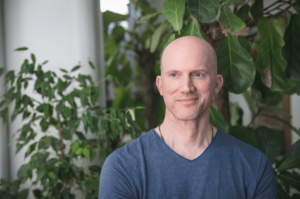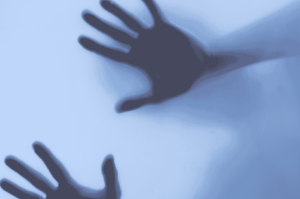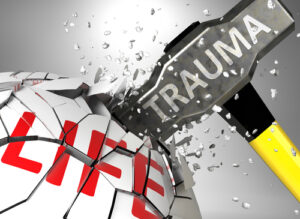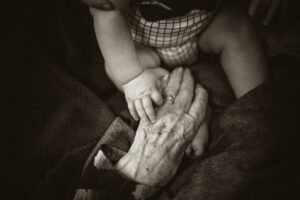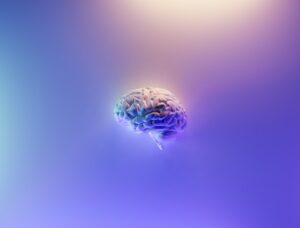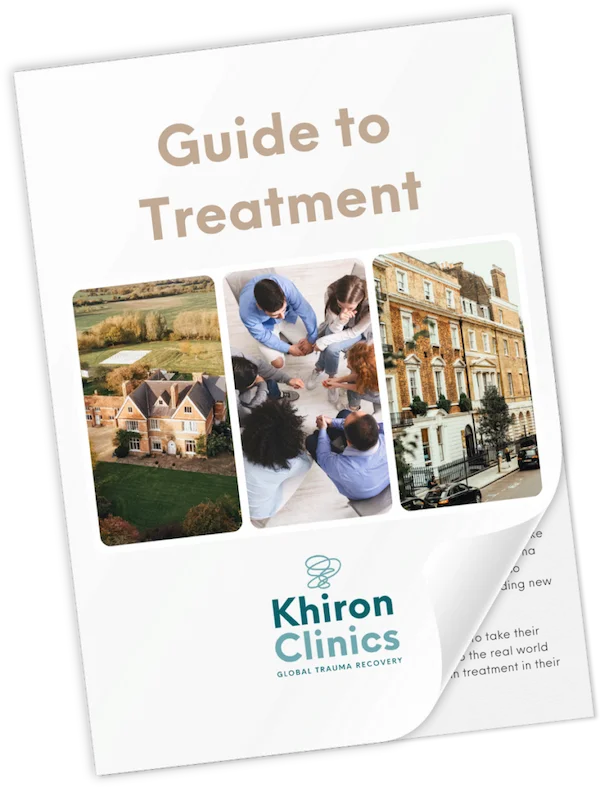PTSD Treatment: Symptoms, Causes, Types and Effective Therapies
Post-Traumatic Stress Disorder (PTSD) is a mental health condition that develops after exposure to overwhelming or life-threatening experiences. It can follow a single traumatic incident or years of chronic stress and emotional pain. Symptoms such as flashbacks, hypervigilance, emotional numbness, and difficulty relaxing are not signs of weakness, they are the body’s way of trying to stay safe after trauma.
At Khiron Clinics, we recognise that PTSD is not simply a psychological condition, but a reflection of a dysregulated nervous system that has been unable to return to safety. Our trauma-informed approach combines leading-edge therapies with compassionate, body-based care to restore balance and help clients find lasting healing.
At Khiron clinics, we see mental health issues as manifestations of unresolved trauma that leads to a dysregulated nervous system.
Understanding the Complex Nature of Trauma and PTSD
Although many believe that Post Traumatic Stress Disorder (PTSD) is a mental health condition primarily caused by catastrophic disasters or combat experiences, it is important to understand that trauma is much more common and varied than this. Trauma can stem from any experience that causes overwhelming stress, leading to a physical response where we ‘freeze,’ feeling unable to overcome the situation. This ‘frozen’ material can often be stored from childhood and triggered later in life by new stressors such as bereavement, a break-up, a car accident, or redundancy.

“Trauma is perhaps the most avoided, ignored, belittled, denied, misunderstood, and untreated cause of human suffering.”
Dr Peter Levine

“Trauma is not what happens to you, but what happens inside you as a result of what happens to you.”
Gabor Maté
Trauma has long been misunderstood as we have struggled to define and explain its complex effects on the body and mind. Many think of trauma as a distressing and memorable event, an unforgettable moment etched into our brains.
However, trauma is not just an event or experience; it is how the body responds to a single event or multiple experiences. Because trauma is rooted in the body’s unconscious response, it is not actually necessary to remember the traumatic event for it to have an impact.
At Khiron Clinics we recognise that trauma is rooted in the unfinished biological response to a previously stressful, or threatening incident that leaves a residual disturbance in the body. As a result, the body struggles to reset and does not return to a state of balance.
This means that the body’s response system becomes hyper-sensitive to future threats. Over time, this heightened sensitivity can overwhelm the body, changing our ability to handle stress. This can lead to an imbalance in how the body functions, affecting overall health. This is what we refer to as dysregulation.

“Traumatized people chronically feel unsafe inside their bodies: The past is alive in the form of gnawing interior discomfort.”
Dr Bessel Van Der Kolk
What is PTSD?
Over the years PTSD has had many other names, including shell shock after World War I and combat fatigue after World War II. However, PTSD doesn’t just occur in war veterans. It is a psychiatric disorder that can happen to anyone of any nationality, culture, age or ethnicity. PTSD can even affect those who have been indirectly exposed to something traumatic. For example, PTSD can occur in a family member who learns of the violent death of someone else in the family.
PTSD can cause intense, distressing thoughts and feelings that relate to a person’s experiences of trauma well after the event is over. One may have flashbacks or nightmares, feel depressed, extremely angry, scared, or numb, and may feel disconnected from the world and their loved ones.
Trauma activates the primitive part of your brain that is all about survival and instincts. This affects the brain’s memory system, causing memories of the event to be stored in fragmented and disorganised ways.
Emotions and physical sensations associated with the trauma can also become stuck in our bodies, leading to symptoms like hypervigilance, flashbacks, and emotional numbness. Trauma can affect how we feel, think, and relate to others, even long after the event has occurred, as the body continues to react as if we are still in danger.
To understand more about the nervous system’s role in trauma, explore our founder Benjamin Fry’s book, The Invisible Lion, here.
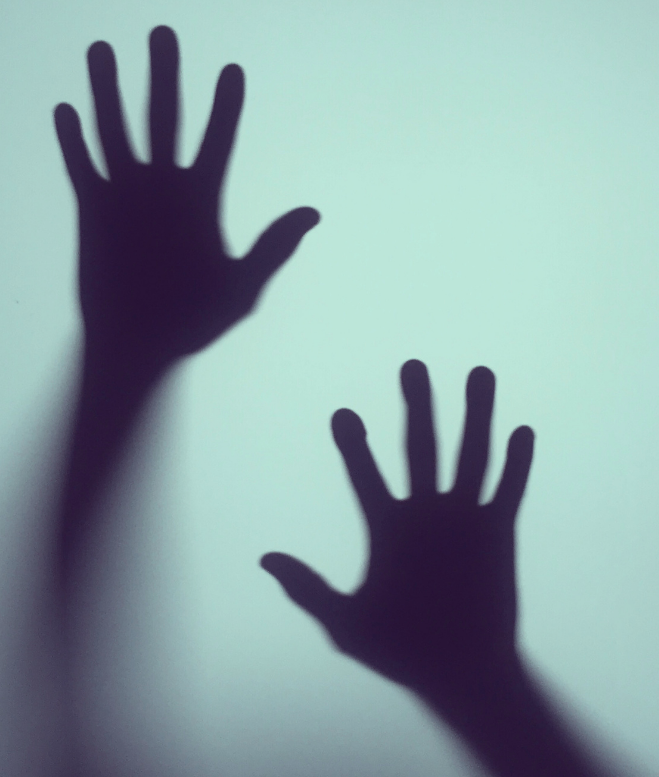
What are the symptoms of PTSD?
PTSD symptoms can appear in many ways: flashbacks, nightmares, anxiety, emotional numbness, or feeling constantly on edge. You may also notice trouble sleeping, difficulty concentrating, or feeling detached from loved ones. These symptoms are the body’s way of expressing unresolved trauma, signalling that the nervous system is still in survival mode.
What are the risk factors for PTSD?
From a nervous system perspective, the risk of developing posttraumatic stress disorder (PTSD) is closely linked to how the body responds and recovers from threat. When the nervous system is unable to return to a state of safety after a traumatic experience, the body remains dysregulated, leaving us more vulnerable to developing PTSD.
Early childhood adversity, neglect, or growing up in environments without consistent emotional safety can condition the body to stay in survival mode. Later in life, new stressors such as sexual assault, violence, accidents, or loss can reactivate these same protective responses, overwhelming the system once again.
At Khiron Clinics, we understand PTSD not simply as a psychological condition but as a reflection of a nervous system stuck in defence. Healing begins when the body learns, gently and safely, that the threat has passed and that it is possible to come home to calm.

The Unfinished Response to Threat
When we face an imminent threat or stress, the body is readied for fight or flight. A host of hormones are released and our physiology temporarily changes – pupils dilate, blood flow is directed to large muscle groups and heart rate increases. Adrenaline and energy are pulsing through our bodies so we can respond quickly and powerfully.
However, in some situations, we can neither fight nor flee, and instead, we freeze. This is unconscious, and also acts as a protective response – pain is often reduced, the body is able to conserve energy and potentially hide, and many people may dissociate, often described as ‘checking out’ or ‘leaving their bodies’.
While this may be protective at the time, the energy generated for action becomes frozen in the body, with the threat response remaining ‘unfinished‘. Post-traumatic stress is the energy trapped in the body from this unfinished response.
Effects of PTSD
Trauma can change how we perceive and interpret the world in many ways. This alteration can cause neutral, harmless sensory stimulation to be interpreted as painful or threatening by the brain. People may find themselves actively avoiding any situation or person which has a connection to the trauma in order to keep themselves feeling safe.
The link to the traumatic experience might not be immediately obvious; it could be a smell, sound, feeling or internal emotion that the brain recognises as related to the trauma in some way. This is a signal to respond to as if we are again in the same deeply overwhelming situation.
People with PTSD often report similar symptoms: hypervigilance, being easily startled, or feeling detached from loved ones. Many develop persistent negative thoughts and struggle to experience positive emotions, which makes daily functioning harder.
Their bodies continue to live in an internal environment of the trauma. We are all biologically and neurologically programmed to deal with emergencies, but PTSD causes frozen memory to be stored at a sensory level, in the body.
At Khiron Clinics we look at symptoms as memories; procedural memories which have impacted and affected the body and generated an imbalance which in turn causes maladaptive behaviors and manifestations.
Co-Occurring Conditions with PTSD
Many people living with PTSD find that it doesn’t come alone. Alongside the effects of trauma, it’s common to experience depression, anxiety, or turn to substances as a way to cope with overwhelming feelings. The body can also carry the weight of trauma, leading to chronic pain, exhaustion, or trouble sleeping.
These overlapping struggles can leave people feeling trapped or unsure where to start. At Khiron Clinics, we understand how deeply connected these experiences are. Our approach supports the whole person—mind, body, and nervous system—helping clients find balance, relief, and a renewed sense of safety.
What Causes Post-Traumatic Stress Disorder?
PTSD can occur when we experience something stressful once, or over a period of time, that overloads our capacity to cope. Common causes include sexual assault, domestic violence, workplace bullying, or serious accidents. While some young people are able to recover naturally, others go on to develop symptoms of PTSD that require professional help and specialised treatments to heal. Here are the causes of PTSD:
Physical Abuse
Emotional Abuse
Sexual Abuse
Emotional or Physical Neglect
Domestic Violence
Mugging or Robbery
Witnessing Violence
Death of a Loved One
Relationship Breakdown
Severe Illness or Injury
Surgical Procedures
Loss of Employment
Workplace Harassment
School Bullying
Natural Disasters
Car, Plane, and Boat Accidents
Combat Trauma
Kidnapping or Hostage Situations
Refugee Experiences
When it comes to the causes of trauma, and the reactivation of the trauma response through triggers, perceived threat plays a crucial role. We create and recreate danger in our minds, and the perception of danger can trigger the same biological stress response, making the list of potential causes of trauma endless.
Treatment for PTSD at Khiron Clinics
Our innovative treatment programmes are delivered by clinicians who are informed, trained and supervised by some of the world’s top trauma experts including Dr Bessel Van Der Kolk, Dr Janina Fisher, Dr Stephen Porges, Deb Dana, Dr Dick Schwartz, Licia Sky and Linda Thai.
At Khiron Clinics, our approach to treatment is unique, offering a combination of proven and effective therapies informed by cutting-edge knowledge of the nervous system. Using these approaches, Khiron Clinics effectively treats a range of conditions that can be difficult to target through traditional psychiatry and psychotherapy.
Traditional therapy often only uses a ‘top-down’ (cognitive) approach, focusing on thoughts influencing emotions and behaviours. At Khiron Clinics, we integrate this with a ‘bottom-up’ (somatic) approach, addressing trauma through physiological responses and bodily awareness.
This approach enhances self-awareness, regulates the nervous system, and promotes lasting healing.
Our Therapeutic Approach
Bodily Awareness: Addressing trauma through understanding physiological responses and safety mechanisms like fight, flight, or freeze reactions.
Self-Awareness and Nervous System Regulation: Enhancing self-awareness and learning to regulate the nervous system.
Healing in Relationships: Recognising that trauma often stems from early relationships, we emphasise the importance of building feelings of safety with others, practising effective communication, recognising triggers, and developing coping mechanisms.
We work with you to understand your symptoms and help find the issues at the root of your experience, which are usually linked to unresolved trauma. Through finding the source of the issue, we are better equipped to help you on your path to recovery.
Our Recovery Roadmap
The Three-Phase Approach to Trauma Treatment
Khiron Clinics follows a three-phase approach to treating trauma: Stabilisation and Symptom Reduction, Trauma Processing and Integration.
Stabilisation
This phase focuses on understanding and getting to know oneself, reducing symptoms, learning about trauma and how to self-regulate so you can stay in connection with others and the present moment.
Trauma Processing
This phase starts by fostering safety and security in the body and mind, allowing individuals to recognise triggers, manage emotions, and make mindful choices. With therapist guidance, they learn to release stuck trauma and emotions by discharging incomplete defensive responses, while also rebuilding compromised life skills such as setting boundaries and building new connections in safe relationships.
Integration
This phase is where we support clients to take their newfound regulation, self-awareness and knowledge out into the real world so that they can apply the skills that they have developed in treatment in their daily life.
Frequently Asked Questions
Can people with PTSD live normal lives?
Yes. With the right treatment for PTSD, it is entirely possible to live a stable, fulfilling life after trauma. Posttraumatic stress disorder (PTSD) is a mental health condition that can cause lasting symptoms, but with trauma-informed care, people can recover and experience positive emotions again. At Khiron Clinics, we use proven PTSD treatment options that help regulate the nervous system, process traumatic memories, and restore emotional balance. Working with a qualified mental health professional can make a significant difference in how you heal and rebuild your life after a traumatic experience.
How can I calm PTSD symptoms?
When PTSD symptoms feel overwhelming, grounding techniques and slow breathing can help regulate the body’s response to traumatic stress disorder (PTSD). Simple steps include noticing sensations in your body, naming feelings, and reassuring yourself that you are safe in the present moment.
At Khiron Clinics, we use trauma-focused therapies such as EMDR (Eye Movement Desensitization and Reprocessing), Somatic Experiencing, and Internal Family Systems therapy to help clients safely release trauma. These approaches can treat PTSD at its roots, reducing anxiety, hypervigilance, and feeling detached from loved ones.
Does PTSD ever truly go away?
With the right PTSD treatment, many people experience profound and lasting recovery. Healing does not mean forgetting a traumatic event like a car accident or sexual assault—it means the body and mind no longer react as if the trauma is still happening. Over time, individuals learn to regulate stress, restore safety in the body, and experience positive emotions again. At Khiron Clinics, our treatment for post-traumatic stress disorder focuses on both emotional and physical regulation, enabling clients to move beyond survival and reclaim their lives.
Does PTSD get worse with age?
Without professional help, symptoms of PTSD can persist or intensify with new stressors. However, with appropriate treatment for PTSD, symptoms typically improve over time. Seeking help from a mental health professional who understands trauma can prevent chronic distress and promote nervous system healing. Even years after a traumatic experience, posttraumatic stress disorder can be effectively treated through specialised treatments such as cognitive therapy, cognitive behavioural therapy, and somatic work. Recovery is possible at any stage of life.
Can PTSD symptoms improve within a few weeks of starting therapy?
Some people begin to feel relief within a few weeks of starting therapy, noticing reduced anxiety, better sleep, or fewer flashbacks. However, full recovery from posttraumatic stress disorder takes time and depends on each person’s nervous system and trauma history. Khiron Clinics provides trauma-focused therapies such as EMDR, Somatic Experiencing, and prolonged exposure therapy—all considered first-line treatments for PTSD by the American Psychiatric Association.
We tailor each treatment plan to ensure therapy proceeds safely and effectively, helping clients build resilience and long-term stability.
Do all patients with PTSD develop negative thoughts, or does it vary?
It varies. While negative thoughts and a depressed mood are common symptoms of PTSD, not everyone experiences them in the same way. Some may feel emotionally numb or detached from loved ones, while others experience intense guilt, anger, or shame. These feelings are the body’s attempt to protect itself after a traumatic event.
At Khiron Clinics, our trauma-informed approach helps clients recognise that these symptoms are adaptive responses—not personal flaws. With therapies like cognitive processing therapy, individual therapy, and group therapy, clients learn to process traumatic memories and gain control of their mental health, paving the way to more balanced feelings and a renewed sense of safety.
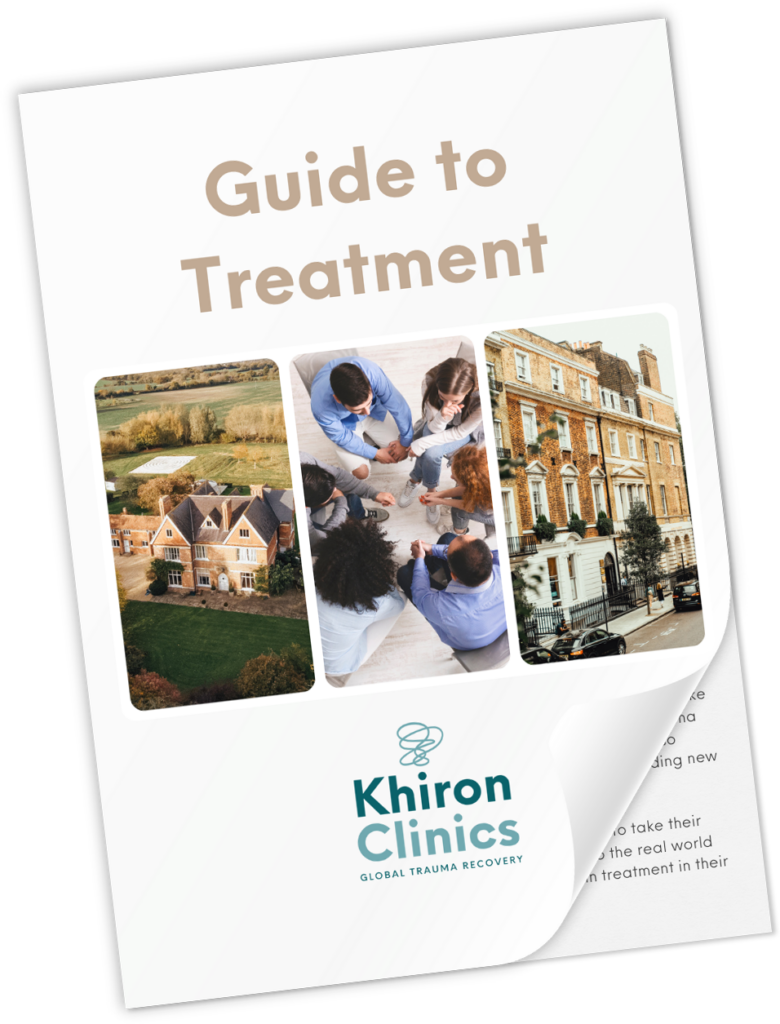
Download the Brochure
Discover Our Innovative Trauma Recovery Pathway
Next Steps
We Are Here to Help You Find the Path to Effective, Long Lasting Recovery.

Talk to Us
Get in touch with us and share your story if you feel comfortable with someone who will listen. Our team are always here to help.

Book an Initial Consultation
Meet with a senior member of our clinical team and get insights into the root causes of your issues, plus a written summary and treatment recommendation.

Download Our Brochure
Discover our innovative trauma recovery pathway. Find out more about how we treat, what we treat, our clinics, pricing and more.
